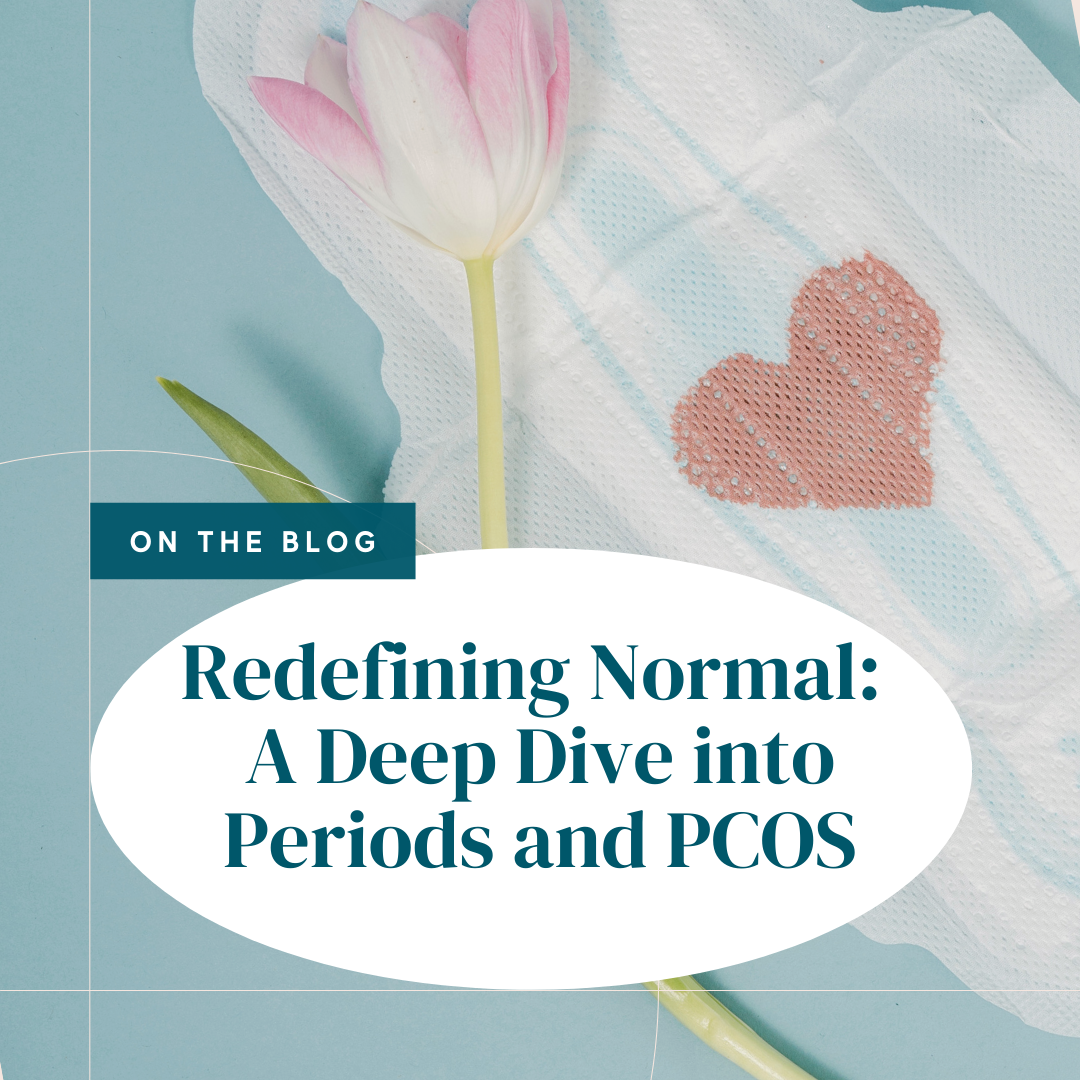Understanding the complexities of women’s health, especially when it comes to periods and PCOS, is crucial for optimal well-being, and yet, so many doctors and educators fail to equip us with the proper knowledge we need to make informed decisions about our health. We want to shed light on all things menstruation so you know what’s normal and what’s not, and you feel confident navigating the maze that is periods.
The Basics of Menstruation
Menstrual Phase (Days 1-5): The beginning of the cycle where the uterine lining is shed and bleeding occurs lasting 3-7 days. Hormone levels, including estrogen and progesterone, are low.
Follicular Phase (Days 6-14): Hormones, especially estrogen, start to rise, stimulating the growth of follicles in the ovaries. One follicle matures to release an egg.
Ovulatory Phase (Around Day 14): A surge in luteinizing hormone (LH) triggers the release of the mature egg from the ovary. This is the most fertile period, usually occurring midway through the cycle.
Luteal Phase (Days 15-28): After ovulation, the ruptured follicle becomes a structure called the corpus luteum. It releases progesterone, preparing the uterus for a potential pregnancy. If no pregnancy occurs, hormone levels drop, leading to the start of a new menstrual cycle.
NORMAL: cycle length of 21 to 35 days are normal along with mild PMS symptoms
NOT NORMAL: irregular cycle lengths, spotting between periods, heavier bleeding than normal, severe PMS symptoms that impact daily functions
PMS Symptoms
Premenstrual Syndrome (PMS) symptoms occur due to hormonal fluctuations during the menstrual cycle, particularly in the luteal phase, which is the second half of the cycle leading up to menstruation.
- Mood Swings: Feeling emotional or irritable a few days before menstruation is common.
- Bloating: Mild water retention leading to a sense of fullness or bloating is typical.
- Breast Tenderness: Slight discomfort or swelling in the breasts is a common PMS symptom.
- Fatigue: Feeling tired or having low energy can be a normal part of premenstrual changes.
- Food Cravings: Desire for specific foods, especially those high in carbohydrates, is a typical PMS experience.
- Headaches: Mild headaches or tension headaches may occur during the premenstrual phase.
While these symptoms are somewhat normal, if you find yourself unable to function throughout the day because of them, it might be time to bring it up to your healthcare provider.
Polycystic Ovary Syndrome – What is it?
Polycystic ovary syndrome (PCOS) is a hormonal disorder affecting 5-10% of women, which includes a myriad of symptoms such as irregular periods, fertility challenges, excessive hair growth, hair loss, weight issues, acne, and more. Left untreated, PCOS can lead to severe complications such as diabetes, cardiovascular disease, fatty liver disease, and infertility.
Diagnosing PCOS:
The Rotterdam criteria guide the diagnosis of PCOS, requiring women to meet at least 2 of 3 criteria:
- Irregular cycles
- High androgens
- Polycystic ovaries on ultrasound
However, the diverse presentation of PCOS in individuals makes it both challenging to diagnose and prone to misdiagnosis.
Other signs and symptoms beyond the diagnostic criteria include high LH levels, elevated AMH, family history of diabetes, overweight or recent weight gain, and high fasting glucose or HbA1c levels.
PCOS symptoms vary widely, from irregular periods to fertility challenges, excessive hair growth, hair loss, weight gain, oily skin, and acne. Notably, not all women with PCOS exhibit the same set of symptoms, leading to underdiagnosis issues.
Insulin Resistance and PCOS:
In 80% of PCOS cases, insulin resistance is the underlying cause, leading to elevated insulin levels and hyperandrogenism. Managing insulin becomes crucial in addressing PCOS symptoms effectively and preventing long-term health risks like type 2 diabetes and cardiovascular diseases.
What Else Could It Be?
PCOS misdiagnosis is a significant concern, with an expanded criteria leading to overdiagnosis while true cases go undiagnosed. Exploring alternative possibilities that can present in similar ways to PCOS should be considered.
These include the aftermath of the pill, premature ovarian insufficiency, hypothalamic amenorrhea, congenital adrenal hyperplasia, Cushing’s disease, hypothyroidism, and hyperprolactinemia. Chat with your ND or family doctor if you suspect any of these may apply to you.
Next Steps
Does this resonate with you?
If you suspect PCOS, seek a thorough workup from your primary healthcare provider. This includes assessing general health, hormone levels throughout the menstrual cycle, and specialized tests if needed. Your Naturopathic doctor can also help guide you on next steps.
NORMAL = you should always feel heard by your doctor and they should do all the investigations necessary to rule in or out PCOS
NOT NORMAL = dismissal of severity in physical symptoms, belittling emotional symptoms, ignoring concerns and limited investigations into potential causes are not normal, and your doctor should always take your concerns seriously
Knowing and understanding the intricacies of your body is crucial for making informed decisions about your health. This knowledge empowers individuals to take an active role in their well-being, enabling them to make lifestyle choices, seek appropriate medical care, and engage in preventive measures. Your health is a priority, take the first step towards a healthier, more empowered you.
Stay well.
If you’re looking for support with your periods, PCOS, fertility or hormone health – book with our ND Olivia today. You can read more about her here.




